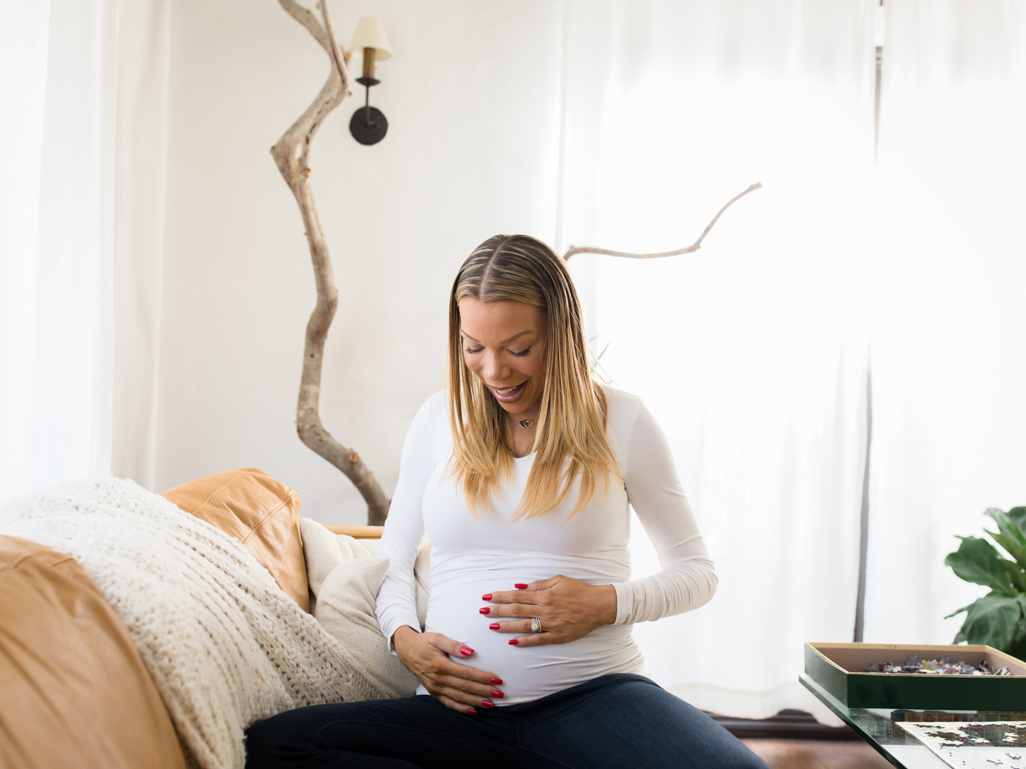
Make your ten-month pregnancy life easy!
Share
Many pregnant women experience discomfort such as back pain during pregnancy when muscles and spine tension begin to carry the extra weight as their belly grows. The following tips can make your pregnancy life easier.

Practice Prenatal Yoga
Yoga, a movement-based strength and flexibility practice with roots in ancient India, is one of the most popular techniques for pain relief, and prenatal yoga is a top choice among pregnant women whose backs, muscles, joints, and nerves are hurting under the weight of pregnancy. Prenatal yoga can help improve posture and "tone the physical body in preparation for the birthing process," says Liz Owen, a Boston-area yoga teacher and the co-author of Yoga for a Healthy Lower Back: A Practical Guide to Developing Strength and Relieving Pain.
Prenatal yoga also tackles emotional stress with deep, mindful breathing exercises that can strengthen and empower. Plus, yoga practice can help you sleep better and relax your mind and muscles. "In the midst of changing hormones and emotions, yoga provides a grounding and focus," Owen says.
Try Acupuncture
Acupuncture is an East Asian medical technique in which very fine needles are inserted into specific pressure points on the body that correspond with various systems of physical and emotional health. Acupuncture removes any blockages that are interfering with the smooth flow of the body's energy, called qi (pronounced "chee"). Stimulating acupuncture points, either through needle insertion or acupressure (a technique in which the practitioner uses fingers instead of needles) can help improve digestion, boost your energy level, and bring relief from morning sickness, migraine headaches, and back pain.
Studies have shown direct positive correlation between acupuncture and pregnancy back pain relief, and many women swear by its effectiveness, but acupuncture must be administered correctly to prevent unwanted side effects such as nausea, headaches, and overstimulation that can induce labor. Consult with your doctor first to make sure acupuncture is right for you, and then find a certified therapist who has experience working with pregnant women.
Get a Prenatal Massage
A certified prenatal massage therapist can bring quick relief when back pain is acute, especially when it's the result of muscular clenching that irritates nerves (particularly the sciatic nerve in the buttocks and legs) and sends pain signals to the brain. Research has shown that in addition to relieving pain, regular prenatal massage can help alleviate depression and anxiety in pregnancy.
Swedish massage is the most common and advisable method of prenatal massage because it is gentle and soothing, and it uses long, smooth strokes that won't aggravate the joints or push fluid through the body in an unhealthy way. Women should first consult with their doctors to make sure prenatal massage is safe and then make sure the prenatal massage therapist is certified. To be comfortable on the massage table, a side-lying position is usually best.
Go Swimming
Swimming is one of the most highly recommended forms of exercises for pregnant women。When you're suspended in the water, gravity has no effect on your body。 Merely paddling up and down the pool lanes will help decompress your spine and tone your legs, arms, and back and core muscles.
As you experience full-body movement in a safe space, breathe deeply and fully to stay afloat—the deep breathing will help you relax emotionally as well as physically. And as you move further into your pregnancy, swimming the breaststroke can strengthen the chest and back muscles. Always stay well hydrated while swimming and stop if you feel dizzy or lightheaded at any point. If you have a high-risk pregnancy, talk with your doctor before you head to the pool.
Support Your Sleep
Sleep can be elusive during pregnancy, especially if your back is hurting, because most women tend to sleep on their sides. Olderman likens the spine in this position to a telephone wire that's hanging between the two poles of your shoulders and your pelvis. "The spine drops down to the bed just like a telephone wire would drop between two poles," he says. To support your back and prevent pain, fold a thick towel lengthwise and place it perpendicular to your body at the point on your waist where your spine is its most "droopy." The towel's length will ensure support without requiring readjustment, even if you roll over during the night. Or try sleeping on your side with a pillow between your knees to reduce the strain on your pelvis and lower back.
Sleeping flat on your back isn't good for you or the baby; it's also very uncomfortable, she adds. Body pillows are helpful for supporting your chest, hips, and lower back. Experts advise sleeping on a firm mattress , and following smart sleep habits such as maintaining a consistent sleep schedule and relaxing bedtime routine, using your bed only for sleep and sex, avoiding bright screens just before bed, keeping the space cool and dark, and not eating for at least two to three hours before bedtime.
Wear a Maternity Belt
A maternity belt, which you can buy online and in many maternity clothing shops, is a supportive undergarment that helps hold up the belly so the pelvic girdle and lower back aren't too strained. If your belly is protruding forward in a pronounced way, rather than with your weight diffused across your midsection, the belt can act as a substitute for your abdominal core muscles, which can struggle to prevent your lower spine from painfully exaggerating its curvature. Doctors generally advise women to try maternity belts and use them if they work, but the belts should be seen as a complement to other remedies rather than the only pregnancy back pain relief strategy.










